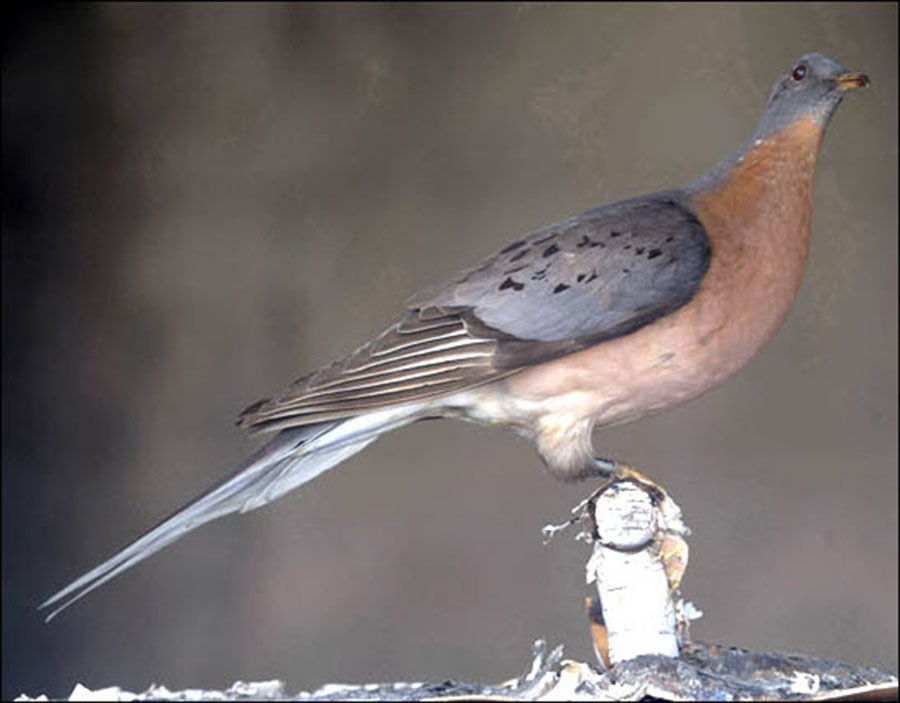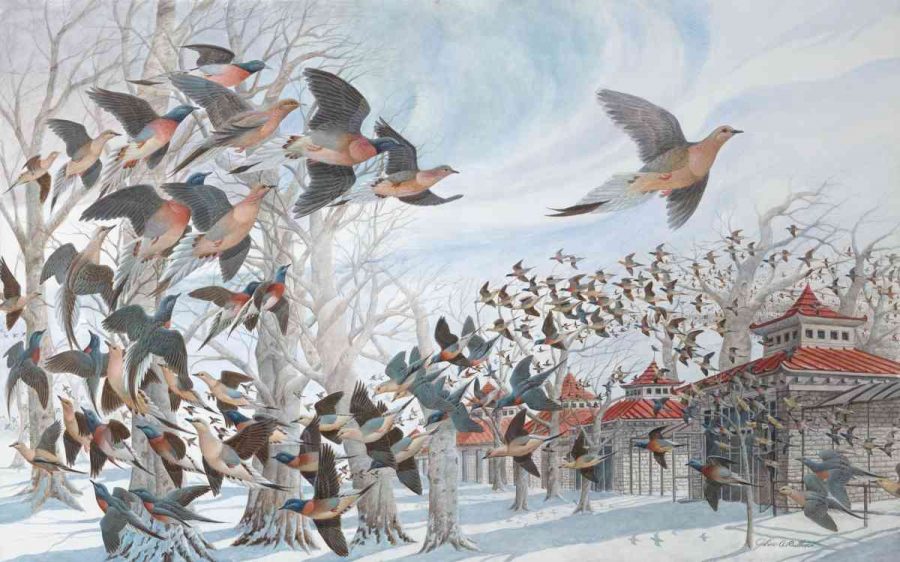A new study shared this Friday further hints on why passenger pigeons — once the most abundant bird species in all North America — disappeared so suddenly from Earth’s surface in the 18th century. Despite the fact that hunters made the process faster, it seems there was another reason hidden in the birds’ genes.
It was tough for the scientific community to understand why the pigeons went from millions to zero. It wasn’t just because there were too many individuals flying across the areas — primarily in North America — but also thanks to their incredible ability to fly for about 300 miles (480 km) without stopping.
Impressively, this new study found something that no scientist ever thought before. It seems that their abundance also played a good role in the species’ disappearance.
The researchers said that the pigeons evolved quickly as they started propagating across the areas they inhabited. However, they also lost some useful traits that would let them survive in smaller groups. When the season hunting began to increase, they weren’t able to adapt to that kind of circumstances.
“When we looked at rates of adaptive evolution and purifying selection in both species, we found evidence that natural selection had resulted in both a faster rate of adaptive evolution in passenger pigeons and a faster purging of deleterious mutations,” said coauthor Gemma Murray. “That is exactly what you would expect to see if selection is causing the differences in genetic diversity.”

Previous reports show that there were around five billions of these pigeons during the 19th century. However, in the early 1800s, this species started experiencing a vast falling due to a surge in hunting.
The last time scientists had the opportunity to see one passenger pigeon alive was in 1914. Martha, a female individual, was in the care of the Cincinnati Zoo until she died.
The remains of Martha are preserved at the Smithsonian’s National Museum of Natural History. She’s there to remember humanity how fast a species — without mentioning the number of existing individuals — can disappear from our world because of excessive hunting.
The pigeons’ defenses slowed after their rapid increase
Researchers from the University of California, Santa Cruz, analyzed samples of tissues gathered from several pigeons preserved in different museums. After the due tests, they realized that there are other species with some features that are very similar to the pigeons’, such as the abundance. This might mean a threat to them if scientists don’t find a solution soon — besides slowing down the hunting.

“Our results suggest that even species with large and stable population sizes can be at risk of extinction after a sudden environmental change,” wrote on the study the lead researcher, Professor Beth Shapiro.
The study showed that the pigeons’ defenses decreased when they were part of smaller groups. Thus, being unable to protect themselves in front of predators. It only took them a few decades to disappear.
According to Professor Shapiro, the main reason for a species’ disappearance will always be hunting. She said that “we may still have passenger pigeons around today” if it wasn’t thanks to the “skilled human hunters.”
Source: Science

It didn’t take much skill to kill passenger pigeons. There were so many – billions, not millions – that a flock would darken the sky for miles. All a “skilled hunter” had to do was fire into a flock with a shotgun and hundreds would fall to the ground.
No mention of the Europeans that settled on the land and committed genocide against the Matives?? Skilled “human” hunters? This article is garbage.
Inarticulate incoherent drivel.
Good to see science being useful . Always wondered about the pigeons. Now how about some adaptive ideas to feed poorer regions without bankrupting other areas .